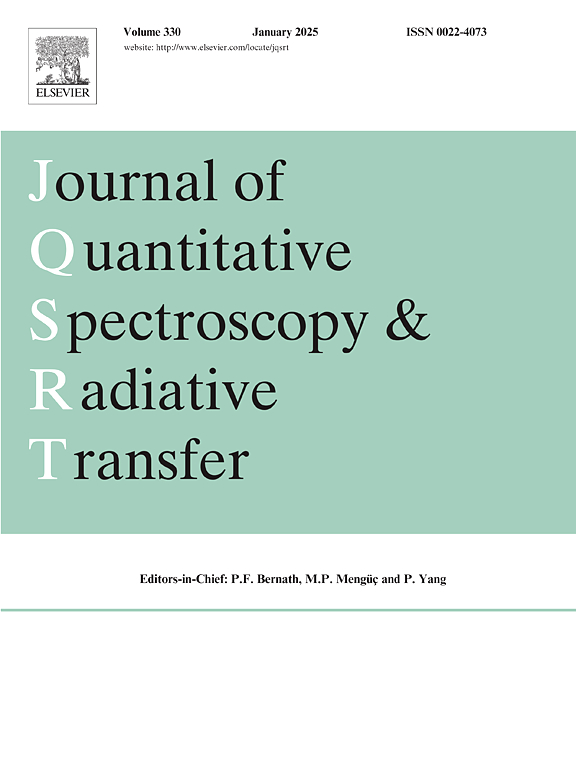A numerically stable comoving frame solver for line radiative transfer
IF 2.3
3区 物理与天体物理
Q2 OPTICS
Journal of Quantitative Spectroscopy & Radiative Transfer
Pub Date : 2025-05-08
DOI:10.1016/j.jqsrt.2025.109470
引用次数: 0
Abstract
Radiative transfer is essential in astronomy, both for interpreting observations and simulating various astrophysical phenomena. However, self-consistent line radiative transfer is computationally expensive, especially in 3D. To reduce the computational cost when utilizing a discrete angular discretization, we use a comoving frame interpretation of the radiative transfer equation. The main innovation of this paper lies in the novel stabilization method for the resulting numerical discretization. The stabilization method is able to reduce spurious oscillatory behavior in the computed intensities, at the expense of extra boundary conditions which need to be enforced. We also implement an adaptive angular discretization for the ray-tracing implementation, in order to efficiently and accurately calculate the radiation field. Finally, we apply this new numerical method to compute NLTE line radiative transfer on a hydrodynamics model, showcasing its potential improvement in computation efficiency.
线辐射传递的一种数值稳定的移动框架求解器
辐射转移在天文学中是必不可少的,无论是解释观测结果还是模拟各种天体物理现象。然而,自一致线辐射传输在计算上是昂贵的,特别是在3D中。为了减少使用离散角离散化时的计算成本,我们使用共动框架解释辐射传递方程。本文的主要创新点在于采用了一种新的数值离散化稳定化方法。稳定方法能够减少计算强度中的伪振荡行为,但代价是需要执行额外的边界条件。为了有效、准确地计算辐射场,我们还在射线跟踪实现中实现了自适应角离散化。最后,我们将这种新的数值方法应用于流体力学模型上的NLTE线辐射传递计算,展示了它在计算效率方面的潜在改进。
本文章由计算机程序翻译,如有差异,请以英文原文为准。
求助全文
约1分钟内获得全文
求助全文
来源期刊
CiteScore
5.30
自引率
21.70%
发文量
273
审稿时长
58 days
期刊介绍:
Papers with the following subject areas are suitable for publication in the Journal of Quantitative Spectroscopy and Radiative Transfer:
- Theoretical and experimental aspects of the spectra of atoms, molecules, ions, and plasmas.
- Spectral lineshape studies including models and computational algorithms.
- Atmospheric spectroscopy.
- Theoretical and experimental aspects of light scattering.
- Application of light scattering in particle characterization and remote sensing.
- Application of light scattering in biological sciences and medicine.
- Radiative transfer in absorbing, emitting, and scattering media.
- Radiative transfer in stochastic media.

 求助内容:
求助内容: 应助结果提醒方式:
应助结果提醒方式:


